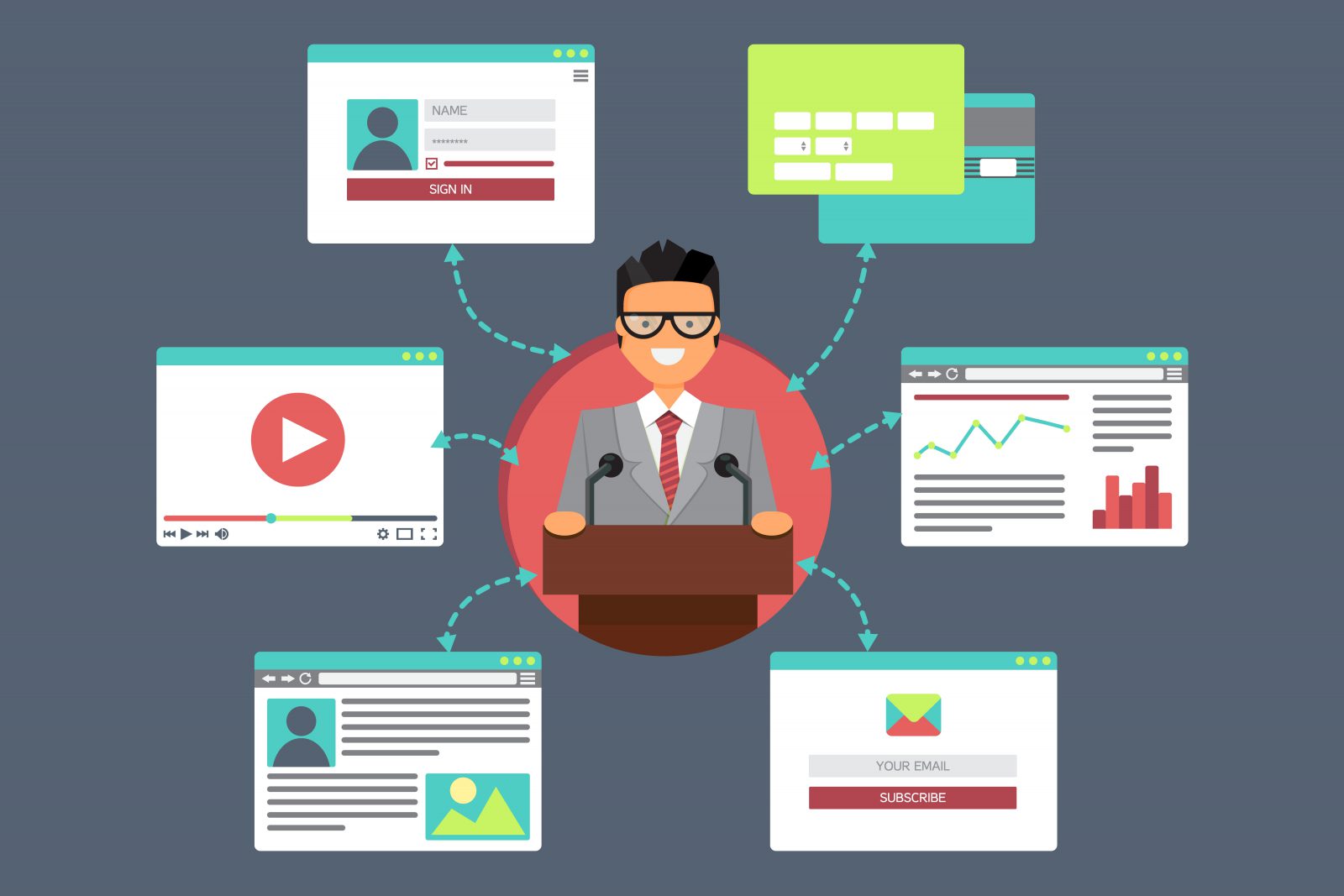- Getting back to basics, the purpose of your meeting
- Differences between virtual vs face-to-face meetings
- Identifying the right platform(s)
- Rehearse, rehearse, rehearse!
- Converting your virtual audience to a face-to-face audience post Covid
Getting back to basics: the purpose of your meeting
70% of meeting planners will shift upcoming face-to-face meetings to a virtual meeting. This is one outcome from a recent Professional Convention Management Association (PCMA) survey. A sentiment echoed in a recent survey BestCities conducted with our association community. Due to Covid19 we must look at alternatives to face-to-face meetings through moving to a virtual platform. This causes a disconnect as many lose sight of what the purpose of their meeting is. So get back to the basics, sit down with your stakeholders to identify the purpose of your meeting. Are you aiming to educate, offer a space for networking or create a marketplace? Could it be a combination or all? Answer this core question and move on to looking at differences between a face-to-face vs a virtual environment.
Differences between virtual vs face-to-face meetings
There are some key differences to consider between virtual vs face-to-face. Identify them to determine your programme, suitable session formats and identify platform(s):
- Time: if you usually run a whole day or multi day event do not expect to do the same in the virtual world. You will fail, as it is much harder to keep the engagement up with a virtual audience who can get distracted. The sweet spot is 1 hour for a virtual event going up to at most 2 hours. Beyond that I guarantee that you are going to lose your audience. If you have a lot of content to share, consider doing a series of 1 hour sessions spread across multiple days or spread out within a day to increase engagement with your audience.
- Meeting formats: your virtual sessions will need condensing, resulting in impacts on your session formats and programme design. Shorter bite sized sessions can make up a block of one hour. It is key to brief your speakers so they are to the point and keep time as overruns will be disastrous for the rest of your programme. Running concurrent sessions on topics or for special interest groups gives your participants choices and thus increases engagement. Make sure to build in some buffer between sessions in your virtual event. This could be in the form of a short break allowing participants to grab a coffee or have a pre-recorded video session between two ‘live’ sessions. It will allow your events team to reset and prepare for the next live sessions.
- Networking: your participants will need a little more help with networking in the virtual world as opposed to the real world. You should include networking in every virtual event you are running. Why? Because it makes your participants feel part of the event and they can interact with others. We are social animals so if your participants feel like they are part of a community you will be seen as the brand that made those connections possible.
- Content: one of the benefits of virtual meetings is that it opens up the world to content. That great speaker you couldn’t get to your face-to-face meeting can now call in to your virtual meeting to deliver their talk. Yet, being smart about your content will also help you deliver great virtual events. What content could be pre-recorded and what needs to go live? Answering these questions will help you manage your resources and reduce the strain on your events team. Are you delivering a lot of educational content? If yes, consider short online sessions to share key points/findings coupled with a digital educational tool. This allows participants to digest content at their own pace, with the potential of opening up a new scalable revenue stream.
Once you understand the differences between face-to-face vs virtual meetings and how it impacts your meeting you can start looking at platforms to deliver your event.

Identifying the right platform
You have established the purpose of your meeting and how a virtual event will impact it. Your next step will be to identify the technology to help deliver it. There are many technologies available and depending on your meeting objectives you may need to choose one or a combination:
- Webinar style sessions: Zoom and GoToWebinar are two of the most used platforms. Despite its security issues, Zoom is the platform of choice due to its break-out session and live polling features. Both of these platforms also allow for integration into other systems, which make them a great way to plug these into your event.
- Networking sessions: Zoom and GoToWebinar are common alternatives. The break out session option in Zoom is a great tool for networking sessions within one meeting. Do you have access to developers? Consider using Twillio as a way to build networking sessions for participants.
- Videos: use YouTube and Vimeo to store pre-recorded videos and embed in your virtual event. YouTube is free but means your content is not protected from public view. Are you charging for your event? Use a paid Vimeo account to hide your content so only your audience can view it.
- Live broadcasting: for professional productions consider using Vimeo Premium to incorporate video feeds, live graphics and more. If you are working with an AV company or production house, this may be the platform of choice. Other free options could be Facebook Live and YouTube Live.
- Integrated virtual event solutions: there are a lot of solutions on the market that integrate all tools into one platform. At BestCities we are using OnAir from EventsAir. This allows us to integrate everything from registration right through to delivery and an ideal solution for organisations running multiple events throughout the year. If you would like to get more information on OnAir or other solutions in the market please get in touch.
Next comes the most important step in the whole process, rehearsing till you get it right.

Rehearse, rehearse, rehearse!
There is not a lot room to improvise in a virtual as opposed to a face-to-face environment. If your speaker goes over time in a face-to-face meeting there will be time throughout the day to be able to catch up. But virtual meetings running over time will have a direct impact on the entirety of the programme. Moreover, any technical glitches could result in participants logging off and not returning. Thus, rehearsing is paramount to your success:
- Speakers: your speaker brief is important in identifying what you want them to speak about and for how long. Get their content in advance to help determine if the time allotted is going to be enough. Have multiple speakers? Use a running sheet with a minute by minute breakdown to help speakers and your events team. They will have a clear idea of the session flow and what roles each team member will play. Rehearse the session in advance to ensure speakers are comfortable using your platform. This allows you to check lighting, video and audio settings. If needed, run rehearsals until everyone is comfortable. Don’t take no for an answer if a speaker says they have experience using your platform. There are many moving parts and you need to ensure these are all working in unison.
- Your event team: a face-to-face meeting will rely on an events team, each with a specific role in delivering a great event. A virtual event is no different and you will need to have resources for this. Your event manager should map out all the moving parts of your virtual event. Pair this to team members so that you can ensure your event runs as it should. Rehearse the event to ensure your team is clear on their role, evaluate and tweak until you get it right. What could go wrong? Work out scenarios with your team. Plan procedures for each scenario with roles of team members in addressing these. Agree on a tool for the events team to communicate behind the scenes, for example, a WhatsApp group.
- Technology: when your technology fails, you fail! The technology has to work, if not you run the risk of irreparable damage to the event and to your reputation. Rehearsing and checking technology is essential. If you do not believe it is working as it should, then do not use it! A speaker has consistent bandwidth issues during a rehearsal? Have them pre-record their speech instead. Your audience will tune out and will not return if you don’t get this right.
I can’t stress enough how important rehearsing is. I can assure you your team and speakers will thank you for it. If everyone is clear on their role, you will increase the chances of a great virtual event!

Converting your virtual audience to a face-to-face audience post Covid-19
Organisations are seeing an uptick in registrations for their virtual meetings. Once life returns to normal don’t assume this will translate into an increase in attendance at your face-to-face meetings. The main reason is that you now literally have a captive audience. Large proportions of the workforce are working from home and have time to kill. Once economies start opening up, you will see a decline in virtual meeting attendance. What can you do now to capitalise on opportunities post Covid19? How do you convert your virtual audience and apply your new skills in virtual events? Here are some ways:
- Identify people registering for your events who are not part of your core audience. Who are they? What made them register for your event? What are they interested in? Where are they based? Include these questions in your registration process to get answers. This allows you to start profiling this group with the aim of converting them into customers.
- Have a rethink of all the events you deliver throughout the year. Do they need to be face-to-face or can they be virtual? Can elements of your face-to-face meeting be virtual to increase ROI? Increasing ROI will also justify their attendance at your face-to-face meeting. Can you offer a hybrid meeting solution to bring together the face-to-face and virtual world?
- Explore new opportunities in underserved regions or segments. Are there possibilities to launch initiatives, face-to-face meetings or tap into a new customer base?
For the last few months we have all needed to operate in a virtual world and adopt technologies that are new to most of us. Virtual meetings have been a tool for organisations to maintain engagement. Adopting a structured approach and returning to the core purpose of your meeting is at the heart of success. Acknowledge the constraints of virtual meetings in delivering your event. Selecting the right platform and rehearsing will make or break your event. Finally, capitalise on your new skills to create new opportunities once economies are open for business again and we can go back to meeting face-to-face.
Follow BestCities on Twitter and LinkedIn to find out what virtual events we have planned for the BestCities community.
About the Author
Nigel started his career at the head office of the International Congress & Convention Association (ICCA) in Amsterdam. He was part of the event organizing team of the association and served 7 years organizing a host of events on all continents. During his tenure he gained extensive project management skills and was responsible for implementing new technologies at ICCA events. Prior to joining the team Nigel worked as Project Manager for Singex Exhibition Ventures, the event organizing arm of the Singapore EXPO.

During his period at Singex he gained experience working on trade & consumer shows and conferences. This all-round experience has given him insights into both the client and supplier sides of the events industry.
Nigel holds a Bachelor of Hotel Administration, Bachelor of European Hospitality Management from the Hotelschool The Hague and a culinary diploma from the Amsterdam College of Hotel and Gastronomy.
Email Nigel or connect on LinkedIn
